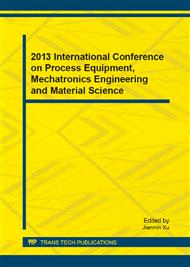p.176
p.181
p.184
p.189
p.195
p.200
p.205
p.211
p.216
Study and Prediction of Flow and Heat Transfer Characteristics in Tube with Wire Coil Inserts of Heat Exchangers
Abstract:
Based on experimental data, this study presents an application of artificial neural networks (ANNs) to predict the heat transfer rate of the wire-in-tube type heat exchanger. A back propagation algorithm, the most common learning method for ANNs, is used in the training and testing of the network. The ANNs can get rid of the complex simulation and numerical simulation, this method is simple. To solve this algorithm, a computer program was developed by using VB programming language. The consistence between experimental and ANNs approach results was achieved by a mean absolute relative error <8%. It is suggested that the ANNs model is an easy modeling tool for engineering performance prediction of heat transfer equipment, high precision, reliable prediction results.
Info:
Periodical:
Pages:
195-199
Citation:
Online since:
July 2013
Authors:
Price:
Сopyright:
© 2013 Trans Tech Publications Ltd. All Rights Reserved
Share:
Citation:


